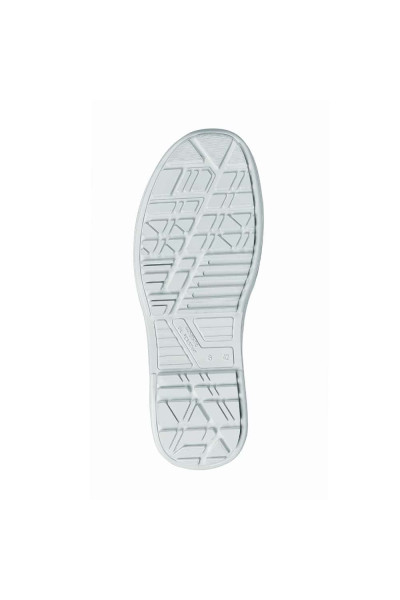Price
Brand
Profe
Forma della Scarpa
Puntale
Suola
Tomaia
Price
Brand
Profe
Forma della Scarpa
Puntale
Suola
Tomaia
★★★★★
€14.00
IVA escl
★★★★★
€71.20
IVA escl
Safety Shoes: Safety Classes for the Healthcare Sector
In the healthcare sector, choosing safety shoes is essential to ensure maximum protection and safety in the workplace. Work shoes are classified into different safety categories, each designed to address specific professional needs, perfectly adapting to the various risks present in healthcare environments.
Safety Classes of Safety Shoes
Each healthcare environment presents different challenges and hazards, which is why safety shoes are distinguished into various safety classes, each tailored for a specific type of job:
- SB: Ideal for environments less exposed to high physical risks, such as laboratories and clinics, where it is necessary to protect the feet from slips and minor bumps.
- S1: The perfect solution for healthcare workers and support staff operating in areas with moderate risks, such as impacts and crush injuries.
- S1P: The most common safety shoes, particularly suitable for those working in healthcare facilities, thanks to their ability to combine comfort and protection against punctures.
- S2: Recommended for those working in humid environments, ensuring protection from water.
- S3: Offer a high degree of protection against environmental elements, ideal for those working outdoors in adverse weather conditions.
Additional Features for Healthcare Safety Shoes
In addition to safety classes, safety shoes can be equipped with additional features that provide extra levels of protection, particularly useful in complex and high-risk healthcare contexts:
- A: Protection against the buildup of electrostatic charges.
- C: Insulation from electric shocks, essential in healthcare environments with electrical hazards.
- E: Energy-absorbing sole in the heel area to enhance comfort during long hours of work.
- M: Metatarsal protection, essential in environments where heavy objects frequently fall.
- P: Puncture-resistant sole, ideal for protecting feet in environments with sharp or cutting materials.
- CI: Insulation from cold, perfect for those working in refrigerated environments or outdoors during winter.
- WR: Completely waterproof shoes, essential for those operating in wet environments or under rain.
- SRC: Maximum slip resistance, particularly useful in hospitals and clinics where floors can be slippery.
CE Regulations for the Healthcare Sector
All safety shoes for the healthcare sector must be certified in accordance with European regulations to ensure compliance with legal safety requirements. The main regulations include:
- EN ISO 20344: Defines test methods and general requirements to verify the protection of safety footwear.
- EN ISO 20345: Requires that the toe cap of the shoes withstand a drop of a weight of 20 kg from a height of 1 meter (equivalent to 200 Joules), ensuring protection from impacts and compressions.
- EN ISO 20347: Concerns work footwear without a toe cap, commonly used in environments less exposed to serious risks.
Toe Cap in Safety Shoes
The toe cap is one of the key components in safety shoes for the healthcare sector, as it provides essential protection against impacts and crush injuries. The materials used for the toe cap can vary, with different options to meet comfort and safety needs:
- Steel: A traditional material, extremely robust and heavy, primarily used in healthcare environments with high crushing risks.
- Aluminum: Lighter than steel, yet still provides excellent protection and is valued for comfort and thermal insulation.
- Composite Materials: Offer equally effective protection but with reduced weight, making them ideal for those seeking lightweight and comfortable footwear without compromising safety.
In the healthcare sector, choosing the right safety shoes can make the difference between working safely and risking serious injuries. It is essential to consider the safety class, additional features, and regulations to ensure that the shoes fully meet the needs of your working environment.













